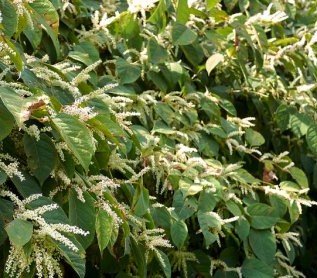Japanese Knotweed

Did you know?
Japanese Knotweed (Polygonum cuspidatum) was originally imported to Canada and northern United States as an ornamental garden plant in the 1890s, but has since become highly invasive. Fortunately, the roots of these plants have many medicinal beneits, as they are used in medicines that treat heart, liver, and digestive system conditions, and they are also known to reduce symptoms of menopause.
Size
Up to 8 feet tall
Flowers, Fruit, Foliage
Cream-colored clusters of flowers bloom from late summer to mid-autumn. Hollow, bamboo-like, red-brown stems grow rapidly in spring and summer months. Red twigs produce heart-shaped, dark green leaves.
Pests & Diseases
None serious
Landscape Use
Not ideal to have at home
Care Practices
This cold hardy plant is extremely adaptable and can tolerate any sun-shade combo, a variety of soils, drought, occasional flooding, pollution, and moderate heat. These plants are considered highly invasive noxious weeds, and the PA DCNR does not recommend you plant them at home at this time.
Native Range
China, Taiwan, Japan, Korea





